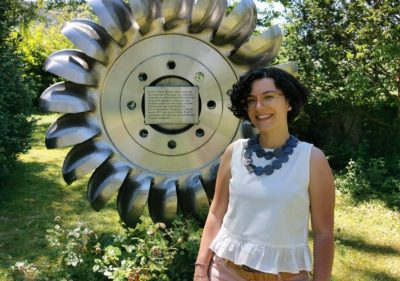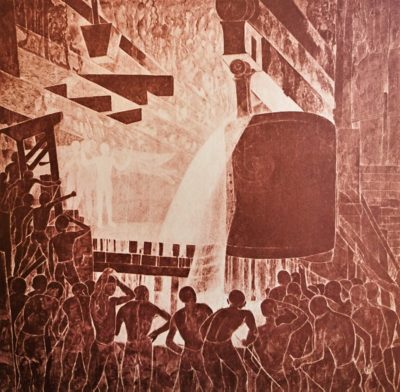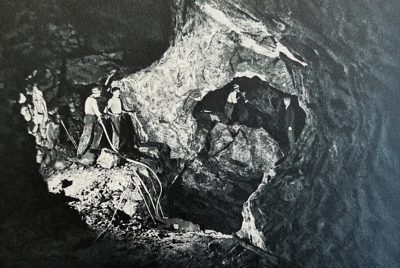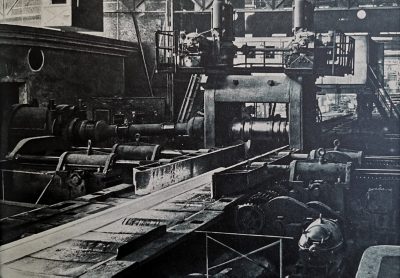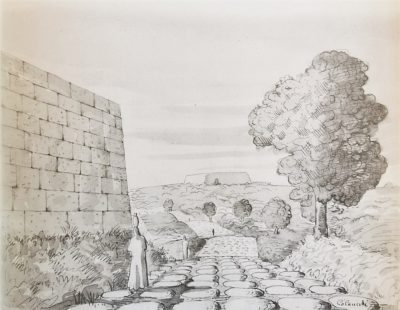Among the rich collection of volumes concerning historical metallurgy, I have chosen 'FIAT. Terra Mare Cielo' as my favourite book (Iron Library Bw 370). The book is part of a celebrative series that the Italian car factory FIAT Automobili, based in Torino, Piedmont, published between the Thirties and the Forties of the 20th century. The whole collection can be found online at the “Deposito digitale” of the Politecnico di Torino. 'FIAT. Terra Mare Cielo' is volume 4 and was published in Turin in 1947 by the FIAT Press Service.
The volume caught my attention because of the large importance it gives to images. Each photograph, painting or drawing is accompanied by a short text, translated into French and English. The historical era in which the book was printed explains some of the stylistic choices. The graphic design shows the legacy of a fascist aesthetic, already evident in the choice of the title 'Terra, Mare, Cielo' and for the opening picture, a scene by the painter Felice Casorati. His opposition to fascism, which led Casorati to a brief arrest in 1923, did not prevent him from adhering to certain pictorial styles of the time, including magic realism, an artistic-literary current of German inspiration.
Leafing through the book, there is some common ground between the strategic choices made by the Romans, the protagonists of the literature on ancient mining history stacked on my desk, and those made by FIAT entrepreneurs in the early decades of the last century. In the first chapter, titled “Miniere FIAT”, the authors emphasise that at the beginning of the 20th century, when FIAT Automobili was set up in Turin, the production of vehicles required first and foremost the availability of raw materials, especially metals.
The nearest metal-producing districts were located in the Piedmontese Alps, one of the most resource-rich of the Italian peninsula. “FIAT carries on mining activities in different parts of the Piedmontese Alps, bringing mines, hundreds of years old, back to useful life and seeking out fresh deposits”, say the authors. There are two areas between Valle d’Aosta and Piedmont to which ancient literary sources allude regarding mining activity. Pliny the Elder refers to a censorship measure that in the Republican age concerned the 'aurifodinae Victimularum', gold mines belonging to the territory of Vercellae. It is in the Traversella mine and in the Canavese area in particular, where pre-Roman populations and Romans were searching for gold and silver, that FIAT searched for its raw materials.
As was the case in Roman times, at the beginning of the last century FIAT entrepreneurs chose an area where the required natural resources were easily available. 'Terra, Mare, Cielo' shows how the establishment of the FIAT factories in Turin brought with it a series of related phenomena.
The FIAT foundries were producing steel in ingots and castings (small and large, from one ounce to 30 tonnes), as well as forged and deep drawn parts. Other products included rolled sections and drop forgings in brass-bronze and copper-aluminium.
A good road network was necessary for the transport of the extracted raw materials during the activity of the FIAT factory, as well as in Roman times. The illustrated part of the volume closes with a picture of an unnamed road. The bridge to antiquity can still be built, however, as the course of a Roman road can be seen here.
